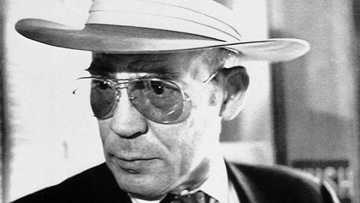Verbal communication: definition, types, importance
Imagine a completely silent world without children’s laugh, tender women’s voices and men’s calming voices. We never think that the ability to speak and to voice our emotions is great happiness, but it really is! So, what is verbal communication and can people live without it?

Source: UGC
Probably a word is the most important tool at our disposal to make life interesting. If all people on the earth kept silence, they would have far fewer opportunities to show what they are, what they think, and what they feel. Because of the lack of exchange of opinions with other people, their feelings would develop much slower, and learning would be more difficult.
What is verbal communication?
Verbal communication definition is quite simple and clear. It is a sign system of human speech that turns into a language. All that is voiced is verbal communication — for example, face-to-face conversations, discussions that take place at business meetings or telephone conversations.
Even though people can live and be successful without speech, it is still the universal means of interaction, since the transmission of information through speech makes ideas less likely to be lost.
Research conveyed by psychology professor Albert Mehrabian showed that 55% of our ideas come from body language (from movements of the small muscles on our faces); 38% of our message derives from the tone of voice, and only 7% of our ideas are conveyed by the words we use. Yes, non-verbal communication seems a little bit more important from the point of view of psychology. But all in all verbal communication gives 45% of the ideas in communication. It is almost half! Could you tell your girlfriend that you love her with the half of your idea lost? Would it be bright and exciting for her not to hear your strong but at the same time tender and trembling voice? To answer these questions, you should better understand the meaning of verbal communication. So go on reading.
What is the importance of verbal communication?

Source: UGC
Continuing the idea of the previous paragraph, one can say that people, eventually, may live without words, but their life will not be so bright.
Imagine silent films. Old stylish black and white pictures filled with taste sometimes fail to convey the ideas, unfortunately. Without voicing, the directors had to invent simple plots. Otherwise, people would not have got the clue of a story. If we compare mute films with modern bright and loud pictures, the difference will be noticeable. Voiced movies gave an opportunity for directors to involve numerous characters, create additional plot lines, experiment with chronology and make stories more exciting. Moreover, a verbal aspect of communication has a complex multi-level structure and can be presented in different stylistic variations: dialect, spoken and literary language, etc.
Words have great power in situations when it is impossible to refer to emotions. Sometimes any speculation seems inappropriate and indecent. For example, in business negotiations, you need to present accurate information and express your thoughts coherently. It can not be done using only gestures and facial expressions. For example, your eyes in non-verbal interaction may reveal that you do not like your interlocutor, but you may demonstrate your tolerance and tactfulness using words. Despite negative thoughts inside your head, let your tongue reproduce only reserved and calm words.
Verbal communication is the most convenient and fast way to express thoughts and feelings. You may orientate in the complete darkness using only voice signs.
There are several types of memorisation: visual, auditory and kinesthetic. It is developed naturally, and for those people who are good at listening, verbal communication is the best way to transfer and get new information.
READ ALSO: How many types of letter writing do we have?
No person can achieve a state of happiness without human communication, without effective interaction with other people. The ability to express one’s attitude to the speaker, listen to him or her, exchange impressions is the primary emotional need of a personality. Each of us needs to be heard. Communication is necessary for a person to be able to exchange emotions, to receive an additional charge of energy from colleagues and friends. Sometimes you may even want to scream from pain or happiness. Verbal communication gives you an opportunity to express emotions in full.

Source: UGC
During communication, people do not just exchange with each other meaningful or not so important information. More often they want to get emotions, a response to their thoughts and feelings. Each of us is eager for attention and participation, for interest from other people, and the ability to expressing ourselves as individuals. The emotional component is significant for the harmonious development of a personality, their productivity and the possibility of self-improvement. But an important remark should be made here: non-verbal communication can also have emotional meaning. However, it does not lessen the role of verbal interaction.
Listening to the voice of a person, we, even without seeing him or her, can more or less accurately determine how old he or she is. We can determine gender, and approximate type of temperament, health status, and even try to guess basic appearance features. An interlocutor can read all this information subconsciously.
The fact is that everyone has ideas about how this world works cannot be discussed, and the experiment conducted in 1927 proves all said above. British psychologist Tom Hatherley Pear decided to check what is going on in the minds of radio listeners. He asked nine people of different genders and ages read passages from The Pickwick Papers by Charles Dickens. The programme was broadcasted on BBC radio stations. Listeners had to describe the doctors only by their voice and to send the results to Pear and his team. About 5000 responded, and all of them managed to give descriptions of people on the radio station. Some participants even provided detailed descriptions.
Each person has unique character traits, special advantages that distinguish them from other people. Accordingly, in conversations with different people, we sometimes experience very contradictory and contrasting emotions. Each person has their unique voice, everyone pronounces words with a certain speed, and these differences make up the peculiarities of individuality. Sometimes we may even experience a feeling of sympathy to someone’s voice and therefore to personality.
What are the main verbal communication types?

Source: UGC
There are four types of verbal communication. They are as follows:
- Intrapersonal communication. This type of communication consists of voicing our thoughts. Have you ever spoke to yourself standing in front of a mirror or an empty room? If yes, you know what intrapersonal communication is.
- Interpersonal communication. It is a one-on-one conversation. Two personalities are involved in it, and each of them performs communicative functions. Moreover, they may have roles like a teacher and a pupil, or a boss and a worker. According to their positions, communicative style is chosen.
- Small group communication. It is a case when more than two people take part in the discussion or conversation. All of us know what conferences, meetings, congresses are. The number of participants is not restricted, but not all of the participants may have an opportunity to speak.
- Public communication. If you hear a depute speaking to a broad audience, know that he or she illustrates a public type of communication. A person who speaks is a sender of data, and the others are receivers. Receivers’ task is to filter what they hear and think critically over the information heard.
There are no doubts that verbal communication makes human lives more exciting. Of course, some people live without the ability to speak, and non-verbal means of communication are much deeper in meaning. But still, we all need words to sound more emotional and distinctive.
READ ALSO: Top types of communication
Source: Legit.ng








